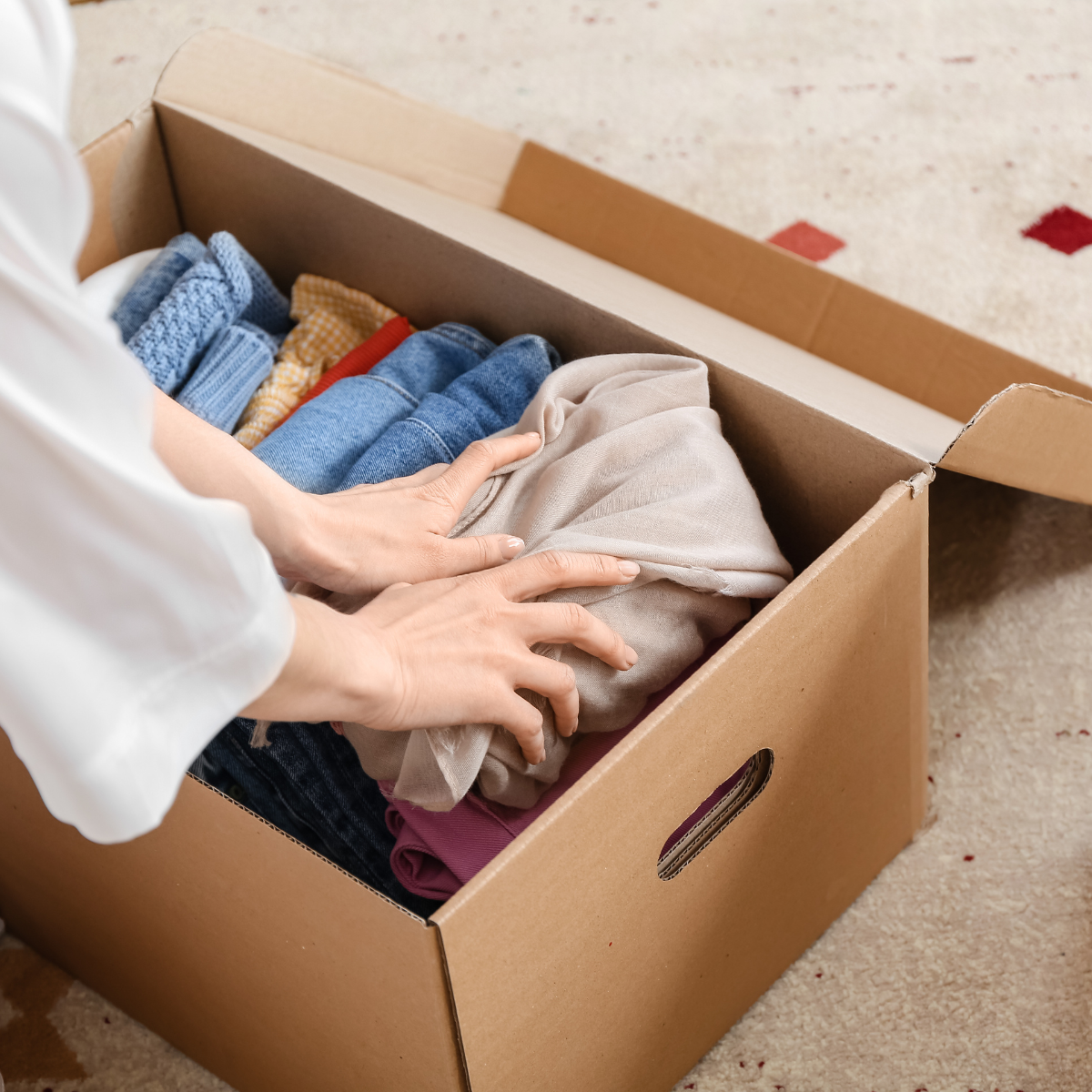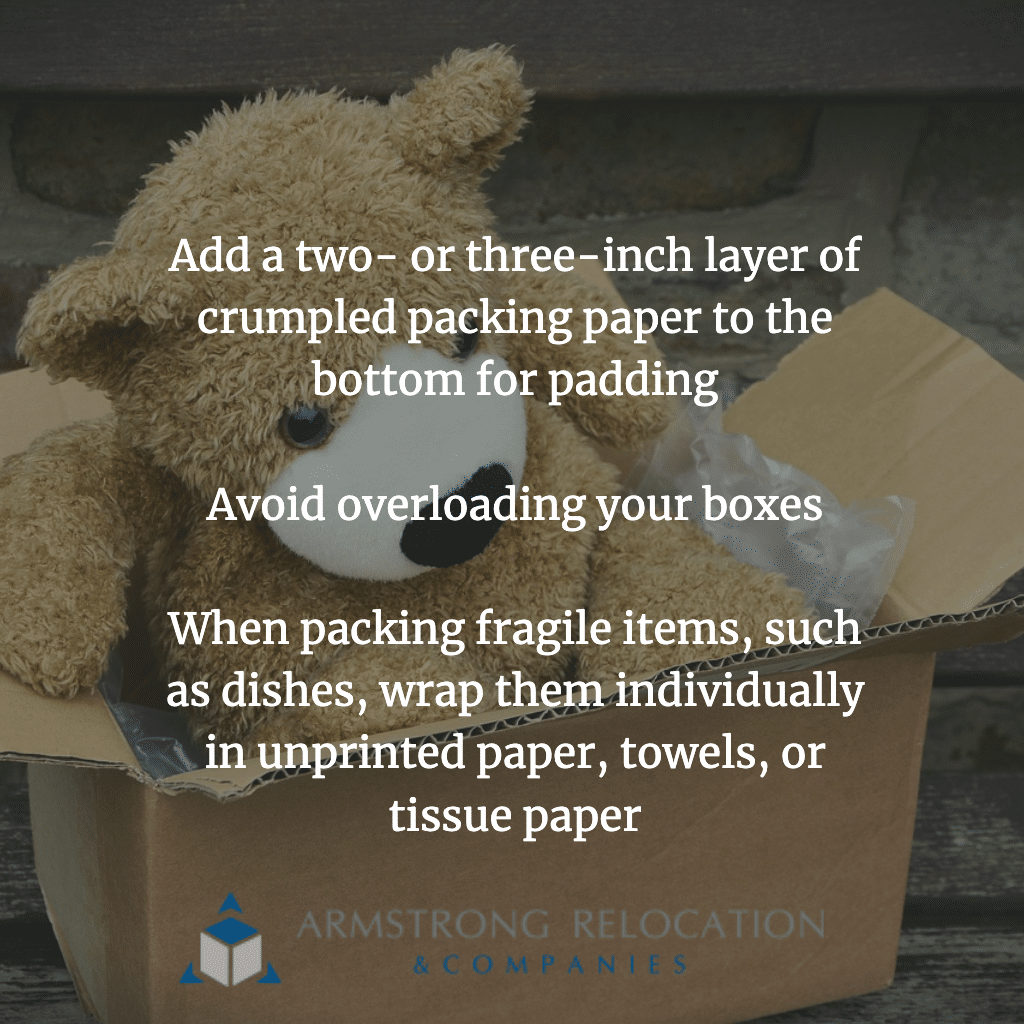9 Steps to Packing Your Home for the Big Move

Congratulations! You’ve found a new home and are getting ready to pack up and move. There is a science to packing efficiently, so here are nine things you should consider when beginning the packing process.
Decide whether you’ll be doing the packing yourself.
Packing can be a stressful process, so hiring a moving service to do the packing for you can save you significant time and energy.
There’s a reason that so many people choose to leave packing to the professionals — movers know how to pack your belongings in the safest, most efficient ways. While they pack, you can focus on other tasks. Regardless of whether you are going solo or leaving it to the pros, you should plan ahead and start early.
Gather the right supplies.
If you’re going to handle your own packing, you’ll need to identify the quantity and sizes of boxes you’ll need. Small boxes are ideal for compact, heavy items such as books and photo albums, while medium boxes work well for pots, pans, toys and small appliances.
If you need to transport fragile items, such as china or glass, you’ll need special boxes for those. If you want only those items professionally packed, you can hire a mover with partial-packing services and direct them to only pack up certain rooms or items.
Set aside prohibited items.
There are some things that can’t go on the moving van, such as hazardous materials, plants and other perishables like produce and frozen foods. Scan through your belongings and decide if you will toss, donate or carry any of these items.
If you choose to bring these items with you, you will need to transport them independently in your own vehicle. Pack these items separately, and label them with a clear indication that you will be transporting them yourself.
Pack out-of-season items first.
Examine each room for the items you forgot about, haven’t used in years, or are currently out-of-season. Decluttering is an important part of the packing process, so if you use an item infrequently, consider selling or donating it. Then pack all of your remaining out-of-season items. Because you won’t need anything in these boxes for a while, you can do this step as early as you’d like.
Secure and label dangerous items.
Find and isolate the items that might damage other items or your movers such as knives and other sharp objects. Carefully protect these items when packing them away, and clearly mark the boxes so there is no injury to you or your movers when transporting or unpacking.
Pack your boxes like a pro.
If you are not hiring the pros, you’ll need to pack like one. Before you start placing items in a box, add a two- or three-inch layer of crumpled packing paper to the bottom for padding. Treat the box like a puzzle: how can you pack items in such a way that they won’t shift during transport? As tempting as it may be to pack a box to the brim, avoid overloading your boxes.

As a test, make sure the cover of your box closes easily but also doesn’t bend far inward. If you are packing fragile items, such as dishes, wrap them individually in unprinted paper, towels, or tissue paper, then fill in any empty spaces in the box with paper. Seal the boxes tightly with tape, and label each box so that you or the movers will know where to place each box in your new home.
Keep all pairs and components together.
If you need to uninstall an appliance for the move, make sure all of the hardware items are packed together. This also goes for anything that is part of a set. Pack small hardware items in sealable plastic bags and tape them to the equipment so that it is easy to re-install in your new home.
As part of Armstrong Relocation’s packing and unpacking services, we can uninstall and reinstall appliances and equipment for you.
Develop a labeling system for your boxes.
If you have coded your boxes correctly, you should know exactly what’s in a box without even opening it. When you finish packing a box, list the box’s inventory on the side or in a notebook.
Assign a room to each box so your movers know where to put everything. You can also develop a numbering system for your boxes, labeling them according to priority or the order in which they should be unpacked.
Take your time.
If you’re doing your own packing, the process can be physically and emotionally exhausting. Make sure to allot yourself plenty of time so that you have time to rest. Focus on just packing up one room at a time, starting with the rooms that you don’t use as often.
Don’t let packing be a pain — leave it to the pros. Armstrong Relocation can handle your partial or complete packing needs, and we’ll treat your belongings as if they were our own. For a more seamless moving experience, contact Armstrong Relocation today!
